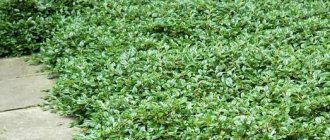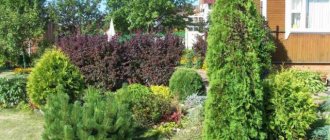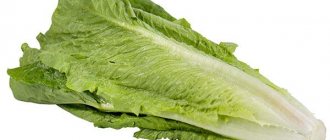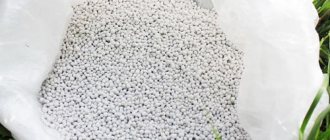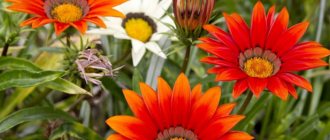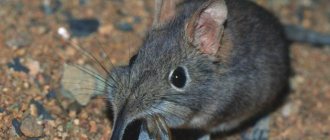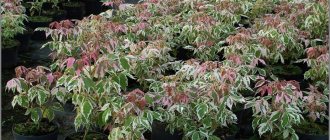- July 27, 2019
- Flowers
- Maria Vetoshkina
Anemone plants come from the Anemone genus, the Ranunculaceae family. The genus of anemone includes about 150 species, and most of them are rhizomatous plants.
There are not many tuberous anemones at all, and they are very different from their relatives in appearance and method of cultivation. This article will tell you everything about tuberous anemones: planting and care, feeding, storage after harvesting.
The most popular varieties of tuberous anemones
- Crown anemones are the most beautiful, but at the same time capricious and demanding to care for variety of anemone. It is distinguished by its large simple or double flowers, which reach 8 cm in diameter. They have the most varied colors, the bush is up to 45 cm high. The homeland of this flower is the Mediterranean and the Middle East, with a very warm favorable climate. Therefore, this type of anemone grows and blooms well in warm conditions. They are often grown in greenhouses or under film covers. For the winter, the tubers will have to be dug up so that they do not freeze.
- Garden anemones - this variety can be seen by its large pink or red flowers, about 5 cm in diameter. Bushes - up to 30 cm high. For the winter, garden anemone tubers also need to be dug up.
- Caucasian anemones are considered the most unpretentious, and, unlike the two previous varieties, the tubers of the Caucasian anemone can be left in the ground for the winter. The plant is also undemanding in care: it does not need to be watered often, and it can grow even in open areas. This variety of anemone has delicate lilac-blue flowers. The flowers are small in size - up to 3 cm in diameter, bushes 10-20 cm high.
- Anemones are tender - these plants are also very unpretentious and can overwinter in the ground. They are not afraid of frosts down to -25 degrees. Flowers tolerate drought well, but are demanding on lighting: they will grow well in sunny places. The height of the bush is about 15 cm. Wild anemones have blue flowers, 3-4 cm in diameter, but garden varieties amaze with their variety of colors: the flowers are white, pink, lavender, red, and even two-colored.
- Apennine anemones are a little similar to Caucasian anemones, but the flowers of this variety are a pure blue hue, and the shoots reach 15 cm in length. The tubers of these anemones can remain in the ground for the winter if the winters in the region are not too severe (up to -23 degrees). Garden varieties of this species can be of different shapes and colors.
Description of the plant
Anemone, or anemone, belongs to the ranunculaceae family and has about 150 species. The flower grows in lowland and mountainous areas, is frost-resistant and thrives in temperate climates. Nine plant species live in the Arctic Circle. About 50 species are found in Russia.
Anemones are perennial plants. The different requirements for care are due to the structure of the root system. Flowers with rhizomes are more unpretentious and tolerate cold weather more easily. Varieties with a tuberous root system require more attention from the gardener. Rhizome species include:
- Altai;
- Ural;
- buttercup;
- oak forest;
- blue;
- Udinskaya
The following have a tuberous root system:
- Apennine;
- crowned;
- Caucasian;
- tender;
- garden
Depending on the type, the height of the flowers can be from 10 to 150 cm. Anemone inflorescences are single or collected in a loose semi-umbrella. The color range is very diverse - from delicate white and pink shades to rich red and purple. Species growing in nature have simple single-layer inflorescences with 6–20 petals; cultivated anemones are double and multilayered. The diameter of the flower is from 2 to 8 cm. Anemone reproduces by seeds, rhizomes or tubers.
Different varieties have different flowering periods. Most bloom in May. Autumn anemones are classified as a separate group; their flowering period is from August to October. There are varieties that bloom from July to early September. The inflorescence lives only from one to three weeks.
Depending on the type, anemones grow well on loose fertile, peaty and even poor sandy soils. Most of them need slightly acidic and neutral soils.
Video: anemones in a flowerbed and in a bouquet
Selection of planting material for planting tuberous anemones
Planting and care, even if carried out according to all the rules, do not always ensure the cultivation of healthy and lush-flowering plants. It is important to buy high-quality planting material here. This can be done in a specialized flower shop at the end of winter. Typically, tubers are sold in branded packaging with recommendations for planting and storage. Such planting material has already been treated with fungicides so that in the future the plants are not subject to attacks by pests and diseases.
It is best to buy tubers from a trusted manufacturer in undamaged packaging, having carefully examined the appearance of the planting material.
Anemone tubers usually have an irregular shape and a small size: 1-3 cm. In appearance they look like dried, flattened lumps with an uneven surface, tubercles and growths. The color of the tubers varies from brown to dark earthy, depending on the variety.
Healthy specimens are uniform in color, without black spots or mold. They are solid to the touch, without emptiness inside.
You also need to remember that purchased planting material has low germination rate: often only one out of five tubers germinates.
Answers to popular questions
When is the best time to plant?
It all depends on the variety. Most Anemone species are ready for planting in mid-spring. Some can be planted in summer to achieve fall flowering.
At home, Anemone can be planted even in winter in order to enjoy the first flowers in early spring.
When are anemones dug up for the winter?
At the end of autumn. The ideal situation is that the plant has completely bloomed and has begun to shed its leaves.
How to collect seeds?
Many Anemone species are self-seeding. To collect seeds, it is recommended to dig boxes with fertilized soil next to the flowerbed while the bushes are flowering. Seeds will naturally fall into it.
For the winter, the box is placed in a warm, but not hot place. In spring you can already expect the first shoots to appear.
Which side to plant and how to determine top and bottom?
Anemone tubers should be planted with their growth point facing upward. Everyday advice says that most of these points are on the flat side of the tuber. This means that the opposite, sharp part should be directed downwards.
Anemone planting dates
Anemones are planted with tubers in the spring, after the soil has warmed up sufficiently. If the summer is warm enough, the anemone will bloom at the end of July, under unfavorable conditions - only at the end of August.
In order for the buds to open earlier, the tubers must be planted in peat pots in advance, before the onset of warm weather, and wait for them to germinate in a cool place.
It is impossible to name the exact time for planting anemones in open ground in the spring, since it will vary depending on the region of growth and the plant variety. Gardeners usually rely on air temperature: the established temperature is 10-12 degrees. If the ambient temperature is lower, then young plants will take longer to take root; if it is higher, this may negatively affect the development of fragile plants.
What is anemone forcing and how to do it by March 8?
Anemone is the same plant that can bloom at any time of the year. The main thing is to comply with all the necessary conditions.
For example, in order for Anemone to please with bright and developed inflorescences by March 8, its tubers should be planted around December-January. At the same time, you can plant already grown seedlings. If you give preference to seed planting, it will take about a year for a normal plant to form that can bloom.
It is important to maintain a low room temperature throughout the growth period. The best option is +12-15 Co. In addition, it is important not to forget that with a lack of light, especially in winter, Anemone does not develop, but freezes. If you don’t notice this in time, it’s easy to flood the flower and ruin it.
Container and soil for planting tuberous anemone
Planting and caring for flowers begins with sprouting the tubers themselves. As mentioned above, in order for flowers to bud faster, the tubers need to be sprouted at home, in a pot, and ready-made plants should be planted in the ground.
The usual plastic and plastic containers for germinating tubers will not be suitable, since during replanting the plant will have to be taken out of such a pot, and during this it is very easy to damage the root system of the young plant.
The ideal option here would be to use peat pots, which are placed in the ground together with the plant.
The soil for planting perennial anemones should be loose and alkaline - these are the best conditions for growth. Acidify the soil with ash or dolomite flour. And to make the soil loose, you can add peat or coarse river sand to it.
How to store in winter and prepare for wintering?
Preparing an Anemone tuber for wintering is quite simple. Conditions for normal storage are no different from similar crops and flowers:
- An ideal place is a basement with minimal access to light and a constant temperature from +1 to +7 C.
- The humidity level is acceptable within 80-100%.
But remember that high humidity along with heat can ruin all the tubers, as they begin to sprout and rot.
Advice: if there is not enough space for all the tubers, then they can be stored in boxes, in several layers. It’s even better if you sprinkle the roots with a layer of wet sand.
One option for storing bulbs is to wrap them in printing paper. Such a lump can be buried in sawdust or sand and thus leave the tubers until spring.
How to soak tubers
Before germinating the tubers, they must first be awakened from sleep and saturated with moisture. But it is not advisable to put anemone bulbs in water, since there will be an excess of moisture and they may subsequently rot.
Soaking is carried out as follows:
- Pour some warm water into the container,
- Add a growth stimulator (it can be purchased, or natural - aloe juice),
- Moisten gauze in the resulting solution,
- Wrap the tubers in a damp cloth, place them in a bag and leave for 5-6 hours.
Choosing a landing site
Whatever the type of anemone, the best place for planting will be transparent partial shade, where the petals will be protected from the sun and there will be enough warmth and light. In the sun, plants bloom well, but the inflorescences quickly lose color and fall off.
All varieties of perennial anemone love moderate moisture, but are sensitive to stagnant water. Therefore, they need to be planted in loose, slightly acidic or neutral soil. If the soil is dense and cakes, it is better to add sand to it. Elevated terrain will reduce the risk of rot.
How to plant anemones
The positive experience of gardeners shows that tuberous anemones are best planted in two stages:
- Germination of tubers.
- Growing plants.
After the soaking procedure, the first stage of planting begins: you need to pour pre-prepared soil into the container, moisten it a little, and spread the tubers on the surface. Then cover the container with film or glass and place in a cool place (temperature about 5 degrees). The soil must be sufficiently moist.
Within 8-12 days the first roots and growth points will appear. This way it will be clear how to properly plant anemones in the ground.
After the first small sprout appears, the second stage begins - growing. It is already produced in a peat pot.
If after 12 days the sprouts have not appeared, then you need to wait another week. At this time, you need to continue to moisten the soil, while trying not to flood it. If the tubers have not rotted, then sprouts will definitely appear.
The anemone tuber with the sprout should be planted in a separate peat pot, buried about 5 cm in the soil so that the sprout looks up.
How to grow in a pot?
There are many known cases when Anemone is grown at home, in pots. Since this plant is not very demanding of care and external conditions, there is nothing complicated in this process.
On the contrary, at home, under ideal circumstances (especially not too hot and not too dry), these flowers can bloom continuously for up to 5-6 months a year. Another important point is that you will need to create good lighting at home, which will last at least 12 hours a day. Otherwise, the flower will remain half asleep almost all the time.
The Decaine variety is in greatest demand for growing in pots . But other varieties of Anemone can grow quite successfully on balconies, in flower pots and simply on window sills.
To grow, you should take a fairly large pot in diameter (from 20 cm), in which you plant 5-6 seeds, 2-3 tubers or 2-3 seedlings.
Fertile mixtures with good ability to pass moisture are suitable as soil. If you prepare the composition yourself, you need to add humus, sand, and sawdust. About a third of the pot should be small stones to improve drainage.
You can feed domestic Anemones only once a year in the spring. It is better to use purchased mixtures rich in minerals.
Place the pot in a well-ventilated area. In terms of temperature, it is better to adhere to the rule: the lower, the better. It is known that in the range from +7 to +16 So Anemone feels best.
The plant should be watered 2-3 times a week. At the same time, you should not spray the leaves of Anemone, as this can provoke the development of putrefactive diseases.
Anemones in a pot
How to plant anemones in open ground correctly
When planting plants in open ground, it is important to choose the right place: it must be protected from drafts, and the level of lighting varies depending on the variety. The soil should be approximately the same as in the pot - loose, breathable, fertile and alkaline.
Before planting anemones, the area needs to be dug up and weeds and stones removed. Tuberous anemones do not like stagnant water in the soil, so damp places are not suitable for them. It is necessary to lay drainage at the bottom of the planting hole. This could be crushed stone, gravel, broken brick.
The holes are dug at a distance of 20 cm from each other, and an anemone germinated in a peat pot is placed in the finished hole along with the pot.
Landing
Anemones are mainly ground cover plants, so they require a lot of space, then they show their beauty most effectively. They should be planted under tree branches, among deciduous shrubs with a deep root system. Fallen leaves in autumn will have a positive effect on the overwintering of flowers.
Requirements for soil and planting site
The soil for anemones should be moderately moist.
Plants love soil:
- light;
- humus;
- well drained;
- ideally enriched with organic compost.
Anemones should not be planted in dry, compacted soil, where they will not survive even one season.
The soil for anemones should be supplemented with compost, which will provide an appropriate amount of humus, which determines the structure of the soil, which will become more airy and will effectively retain water.
Anemones prefer semi-shady positions, but some are very tolerant and, given good conditions, will grow in sunny and shaded areas. Many species grow well in shade or partial shade - for example:
- tender (blanda);
- Japanese (hupehensis var. japonica);
- oak forest (nemorosa).
Other species prefer sunny places, for example:
- forest (sylvestris);
- multi-incision (multifida).
However, anemones usually adapt quite well to their surrounding conditions and learn to accept the available light levels.
Landing
Anemones are usually planted in 2 terms:
- in spring (varieties blooming from August to October);
- in autumn (spring varieties).
However, some species have preferences in this regard. For example, crown anemones can be planted in early spring, while forest anemones can be planted in May or autumn.
Tubers should be soaked in warm water for several hours before planting. Plant the plants in a prepared place, weeded from weeds, maintaining distances:
- for small varieties – 5-10 cm;
- for large ones – 50-80 cm.
After planting, the bed should be covered with mulch to protect the soil from loss of moisture and limit the growth of weeds, which are serious competitors of flowers, especially small varieties.
Planting tubers in open ground
Planting anemone tubers directly into open ground is also possible, although less preferable. They are planted immediately after soaking; there is no need to further germinate the tubers. The distance between plantings is also 20 cm. The planting pattern will depend on the size of the tubers:
- With a tuber size of 1 cm - 50 bulbs per sq.m.
- With a tuber size of 1.5 cm - 30 bulbs per sq.m.
- With a tuber size of 2 cm - 25 bulbs per sq.m.
The first two options are buried in the soil to a depth of 4-5 cm, and larger tubers - to a depth of 8-10 cm.
Planting stages:
- Make planting holes about 15 cm deep,
- Place humus and ash on the bottom,
- Place the tuber on top, with the flat growing point up and the sharp end down (if in doubt, you can lay the bulb on its side).
- Sprinkle with soil.
The soil must be moist. Shoots will appear in 20-25 days.
Popular types and varieties
The varietal diversity makes anemones an extremely popular ornamental plant among gardeners. If you wish, by planting flowers with different flowering periods, you can admire the colorful flower beds all season long.
Anemone tender
Tender anemone are compact bushes 10 cm high with white, blue or pink flowers. The flowers are 2–4 cm in diameter. It blooms in May, and in June the growing season ends and its leaves dry out. Flowering time - no more than 3 weeks. Tender anemone is resistant to low temperatures, is not afraid of pests and is easy to care for. Prefers to grow in slightly shaded places.
The tender anemone variety “Blue Shades” is quite frost-resistant, practically not affected by any diseases and is very unpretentious
Crown anemone
Crown anemone is heat-loving and quite capricious. The flower, originally from the Mediterranean, grows up to 30 cm. The color of large (up to 8 cm) flowers is red, pink, lilac and white. Hybrid varieties can be terry with a border or interspersed. The species is not frost-resistant, but the crown anemone blooms in spring and autumn, although autumn flowering is less expressive. Requires good light and alkaline soil. Crown anemone is the most popular species for cultural plantings. It has many varieties.
Photo gallery: popular varieties of crown anemone
Anemone "Bicolor" is used to decorate flower beds
Anemone "De Caen" opens its buds with the arrival of summer; in hot weather it fades, but blooms again in the fall
Externally, “Mount Everest resembles two flowers at once - an aster and a dahlia; its double snow-white petals form large flowers with a diameter of up to 10 cm
This variety of double anemone reaches a height of 30 cm, it has few leaves, but the single flower is very large - up to 10 cm in diameter
The Fokker variety is used in floristry and landscape design.
Japanese anemone
Japanese anemone is an autumn species. Flowering begins in early autumn and continues until frost. Grows in large bushes up to 1.5 meters high. Flowers of some varieties can be semi-double or double. The shades are very diverse - from delicate light to dark saturated. The Japanese anemone does not tolerate frost well; it needs to be covered for the winter. Loves sunny places.
Japanese anemone does not immediately attract attention, but it is difficult to take your eyes off its graceful flowers
Forest anemone
Wood anemone is the most common species in Russia. Her home is a shady forest, forest edges and even rocky slopes. It grows equally well in fertile and poor soils. Forest anemone blooms early and blooms for only about a month. The stem grows only up to 20 cm, the delicate white flowers with a yellow center are small - up to 3 cm.
Forest anemone is easy to care for and is suitable for growing in the middle zone
Hybrid anemone
Hybrid anemones are an autumn species, bloom in August - September and bloom for up to 40 days. Strong stems do not need support, although their height can reach 1 m. Large (5–8 cm) flowers are collected in umbrella inflorescences; there are double varieties. Shades - delicate pink, white, carmine, red. Abundant flowering is ensured by fertile, loose soil.
"Queen Charlotte" grows up to 60–90 cm, the flowers are of medium size, the flowering period is from mid-summer to the first frost
Caring for anemone: feeding
Subsequent cultivation of anemones in open ground will not cause much trouble, but you should not forget about the flowers.
In order for plants to delight with lush and abundant flowering, it is important to fertilize in a timely manner. The first time you need to feed it is when the first green leaves appear. This will require nitrogen-containing preparations. You can feed with chemical fertilizers, but, as a rule, ordinary organic matter is chosen. For example, rotted mullein mixed with ash.
The second time is fed when the buds are forming. This will require complex mineral fertilizer. This way there will be more flowers and flowering will last longer.
If the tubers remain in the ground for the winter, then in the fall the plants can be fed with nitrogen-free fertilizers.
Reproduction
Anemones reproduce in four ways:
- Seeds
- Part of the root
- Dividing the bush
- Tubers
Let's look at each in detail:
Seed propagation
Anemone seeds have extremely poor germination . Only a quarter of them will germinate, provided they are fresh. Germination can be increased by stratification.
Anemone seeds
Step-by-step instruction:
- Refrigerate for 4-8 weeks. Mix them with peat or sand. Moisturize well.
- Every day the mixture is checked and sprayed with water.
- After the seeds swell, the substrate is added. Re-hydrate generously.
- Transfer them to a well-ventilated place. The temperature should be maintained no more than 5 degrees.
- After the first shoots appear, they are buried in the ground or snow. The top of the planting should be covered with leaves or straw.
- After the emergence of seedlings, they are planted.
For those who find the process difficult, you can use the second method:
- In autumn, sow seeds in boxes with loose soil.
- Bury the boxes in the garden and cover the area with spruce branches.
- In the spring they are dug up and planted.
Thus, natural stratification takes place in winter. The first flowering occurs on average after 3 years. It depends on the variety. Some may bloom a year earlier, some later.
Propagation by roots
Anemones with creeping roots can be propagated by dividing them:
- After the plant has finished flowering, dig it up.
- The roots are divided into segments. Each of which has a renewal bud. They usually form by the end of July. These buds are responsible for the growth and flowering of the plant the following year.
- The members are seated. They are insulated for the winter so they don’t freeze.
In this way you can propagate Altai, Amur, smooth, oak forest, buttercup, and Udin varieties. There are species of anemones capable of producing root shoots. These include forked, hybrid, Canadian, and wood anemones.
Anemone in natural habitat
Their roots produce shoots, which develop from adventitious buds of the root system. It is recommended to harvest root cuttings in early spring or late summer. Such cuttings take root only 50%.
Step-by-step instruction:
- The plant is dug up.
- Wash the roots.
- The cut is made near the root collar.
- The plant is returned to the ground. It takes root during the growing season.
- The roots are cut into cuttings 5 cm long.
- Plant in pots filled with loose soil mixed with peat and sand. The distance between the cuttings should be about 4 cm. The upper part of the cutting should stick out from the ground.
- A layer of sand is poured on top, covered with film or placed in a greenhouse. You need to water moderately, otherwise the cuttings will begin to rot.
- The film should be removed when green shoots appear.
- Planted in open ground the next year.
Tuber division
Apennine, Caucasian, tender, crown anemones have tuberous roots . They can be propagated by dividing the tuber. Each separated part must have one or more buds.
Anemone tubers
Division occurs while the plant is dormant . This period occurs at the end of summer.
Dividing the bush
By dividing the bush you can propagate the daffodil and long-haired species. A prerequisite is a vertical root system.
Dividing a plant bush
The bush is divided, each part must have part of the root and bud. The separated parts quickly take root, they practically do not get sick.
Watering
When choosing a place for an anemone, you need to take into account that the plant constantly needs water. If there is not much rain in the spring-summer period, you will have to water the anemones regularly. Water for irrigation should not be tap water. It would be good if there was a barrel on the site where tap water would settle and rain would be collected.
When it's not too hot outside, you can water once a week. Otherwise, watering is carried out daily - in the morning and evening, when there is no bright sun. The main thing to remember is that anemones do not like both waterlogging and drought.
Flowering conditions
In general, Anemone begins to bloom quite early even without thorough care. Some varieties even bloom twice a year.
What you will need to especially watch out for is:
- So that the bushes are planted in partial shade. Too much sun can harm the plant. As well as the complete absence of sunlight - too.
- Do not overdry the soil near the bush. If necessary, water additionally as needed.
- Monitor the appearance of pests and remove them in a timely manner (remove them manually).
Otherwise, you can cope with care even without serious experience under your belt. So most of the planted Anemone bushes are sure to bloom.
Care after flowering
If anemones are grown in a fairly warm region, then after flowering they do not require additional care. The ground part of the anemone will wither, and thanks to mulching the soil around the bush, the remaining issues will be resolved by themselves:
- No need to weed
- The soil will not dry out quickly due to the hot climate,
- Mulch gives the plant additional nutrients, so the plant does not need to be fertilized before wintering,
- A thick layer of mulch will protect the tubers from freezing in winter.
Top dressing
In terms of feeding, Anemone is one of the most undemanding flowers. Enrichment of the soil with minerals is required only once a year - in the fall. And even then only if no fertilizers were used at all when planting in the spring.
In the summer, when flowering is in full swing, it is allowed to fertilize the top layer of soil with organic fertilizers (but strictly not with fresh manure!).
After applying fertilizers, many gardeners note that it is better to weed and loosen the beds with Anemone. But under no circumstances should you use large hoes for this, as there is a risk of damaging the very thin roots of the bushes.
Is it necessary to dig up anemone tubers for the winter and how to store the dug out planting material
Whether to dig up anemones for the winter depends on their growing region. If the temperature in winter does not drop below -20 degrees, then the tubers do not need to be dug up, but only securely covered with mulch or spruce branches. But if the winters in the region are more severe, then it is better not to risk the plants: they will not survive severe frosts even under cover.
You need to dig up the tubers after the above-ground parts die off - around August. After digging, the tubers need to be sorted: damaged ones should be removed, and good tubers should be washed in a weak solution of potassium permanganate as a disease prevention. After this, dry it a little.
Until autumn, the tubers should dry: lie in a dry, ventilated room, with a temperature of about 20 degrees. And in the fall, the planting material should be sprinkled with sand and stored in a basement with a temperature of about 4 degrees.
As a conclusion, I would like to say that growing anemones on your site is not as difficult as it seems at first glance. The main thing is to pay attention to planting and caring for anemone in the spring, then in the summer the plants will delight gardeners with their beautiful lush flowering. The result is definitely worth the effort.
How to care for anemones
Caring for a delicate anemone is not at all difficult. It does not require any special agricultural techniques. It is enough to provide the flowers with moisture, fertile fertilized soil, and they will bloom long and luxuriantly.
Watering and loosening
In a normal summer, flowers only need one generous watering every 5–7 days. If the summer is dry, water the anemone twice a day - early in the morning and in the evening, when the sun sets.
Weeding and loosening the soil around the anemone must be done carefully so as not to damage the delicate roots.
Top dressing
In regions with cool summers, anemones are fertilized three times. In the spring, fresh shoots that have just appeared are watered with a weak urea solution (1 tablespoon per 10 liters of water). When buds appear, anemones are fed with complex fertilizers with potassium, phosphorus and a small nitrogen content (in a ratio of 1.7:6:1, respectively) or universal vermicompost, following the instructions. And the last time - during flowering. This time there should be no less nitrogen than phosphorus. Make sure that when feeding, liquid does not get on the leaves.
If you dug up the soil and applied fertilizer before planting, there is no need to additionally feed the anemones this year.
Support and trimming
Anemone bushes have quite strong stems. And still, some varieties that grow above a meter need support. This precaution will prevent the stems from breaking due to gusts of wind. To do this, use long pegs or slats from a nearby fence or gazebo.
When flowering ends, it is better to cut the plants immediately, leaving 3–5 cm above the ground. Then all the strength and nutrients will go into the roots, which will allow the anemones to better survive the winter. If seeds are needed, pruning is done after collecting the seed.
Transfer
It is not advisable to keep anemones in one place for several years. The soil is depleted and the flowers are weakening. Many varieties finish growing early, the foliage dries out and then it is difficult to find their roots for replanting. Therefore, it is better to mark such varieties with pegs.
The best time to divide and replant anemones is July and August. To do this, dig up the entire planting and only then divide it into separate rhizomes. They can be cut, it is important that the buds remain on the pieces. Parts of rhizomes or tubers are planted in the ground in the manner already described, watered and mulched. The transplanted plants will begin to bloom next summer.
Preparing for winter
Many types of anemones overwinter well in the ground. In the south, adult plants are covered with mullein, humus, and leaves for cold weather. In temperate mid-latitudes this is not enough. The trimmed plants are covered with a thick layer of mulch (at least 10 cm), straw and spruce branches. For tender anemones in the first year of planting, the layer of mulch needs to be increased. In early spring, the first thing to do is remove all cover so that new shoots can emerge.
In cold regions, flower beds with anemones should be covered with a thick layer of mulch and spruce branches for the winter.
It is better to dig up crown anemone even in warm regions. This is done after the end of the growing season. The tubers are pre-dried, then placed in a single layer in a box, where they are stored until autumn. For the winter, it is better to put them in a room with a temperature of 2–5°C.
How to propagate anemones
Anemones are best propagated by division:
- Cut the tuber so that each part has a renewal point.
- Rinse them in a weak solution of potassium permanganate or fungicide and let them dry.
- Then sprinkle the cut areas with crushed charcoal and plant them in the ground in the usual way.
It’s even easier with fresh rhizomes. Cut off new shoots from them and immediately plant them in the ground. It is better to propagate anemones in this way in the spring, at which time they take root better. In Japanese anemone, distant rosettes sprout as the root system grows. They can also be used for propagation along with part of the roots.
Growing problems and their solutions
One problem that anemones may have is a lack of flowering. Causes:
- Spring replanting is stressful for the delicate anemone, so such a flower will bloom later than its untransplanted counterparts, you just need to be patient.
- The plant lacks moisture. Monitor the soil moisture for some time and increase watering if necessary.
- Anemone grows for several years in one area and does not have enough nutrition. It may be worth transplanting it to another place or adjusting the feeding system. As an urgent measure, water the soil under the flower with a complex fertilizer for flowering plants.
Features of care
The main thing in plant care is to constantly maintain soil moisture. When watering, you need to find a balance in the need for water. That is, you cannot constantly flood the bushes, but you also cannot allow the soil to completely dry out and crack the surface. To retain moisture longer after watering, plantings are mulched:
- peat;
- by exchange;
- any organic matter.
In addition, mulch will prevent weeds from growing around the bushes. You need to water the bushes early in the morning or in the evening with warm water. Cold water can cause plants to suffer temperature shock and die. After watering, apply fertilizer once a month. A mullein solution or herbal infusion is suitable for this. After which it is necessary to carry out weeding so that the emerging weeds do not destroy the seedlings.
It is necessary to insulate for the winter only at the latitude of the Moscow Region, where the bushes are covered with spruce branches or covered with non-woven material, which protects the anemone plantings from freezing in the winter.
Actually, other than germination of tubers and timely regular watering, there are no other problems with growing anemones.
Diseases and harmful insects do not visit this plant. If spotting appears on the leaves, this can only indicate a viral disease. Such bushes are removed from the ground and destroyed outside the site so as not to contaminate the soil.
Regular watering is necessary for anemones during flowering and on hot days.
Diseases and pests
This crop tolerates diseases well, and many species are completely resistant to diseases.
Among the pests, we should mention snails and slugs , so if you suddenly notice these creatures on your flower, you should get rid of them. First, they should be removed from the plant by hand, and then treated with a solution of metaldehyde.
There are varieties that are susceptible to attack by winter worms or nematodes. If your bush has contracted a nematode, it will have to be dug up and disposed of, and the soil where it grew will need to be replaced.
It takes a lot of work to grow beautiful perennial plants. It is important not only to know which flower to choose so that it looks harmonious in the garden, but also to take into account all the subtleties of caring for it. Proper planting, special care in the open ground - and the perennial anemone will delight every gardener with its beauty.
Anemones: growing from seeds in the garden
Author: Natalya February 27, 2021 Category: Garden plants
Anemone, like all proud beauties, requires special treatment. Therefore, no general recommendations, no universal advice! Almost each of the 160 (!) varieties of anemone has its own requirements for watering, soil, light... But don’t rush to give up whims! A certain formula for success in growing anemones (even if you don’t know the variety exactly!) still exists: plant in partial shade, organize drainage, as they grow, fertilize and loosen – half the battle is done!
- Why is the anemone afraid of weeding?
- How to organize continuous flowering of anemone on your site from April to November?
- How to wake up “lazy” flower seeds?
- How to organize proper wintering for a plant?
Read about all this in our article.
Anemones - daughters of the winds in garden decor
Anemones, or anemones, are very light and therefore charming plants that add lightness and airiness to any area of the garden in which they are planted. There are many types of anemones in cultivation, no more than five of which are decorative. The rest are cultivated wild flowers. It is in their pristine beauty that lies the true charm that is absent from artificially created hybrids. Meanwhile, even varietal representatives of anemones have that very zest that can be used to advantage when decorating a flower garden.
Anemones belong to the perennial herbaceous crops of the same genus of the Ranunculaceae family. They are found everywhere and thrive in both northern and southern climate zones. Translated from Greek, Anemone means “daughter of the winds,” and this is no coincidence, because plants of this genus perfectly withstand wind loads: at the slightest breeze, their stems sway and their petals begin to flutter. In Russia, anemones are called anemones.
There are about 150 species of anemones found in nature, which differ in the height of the clumps, the shape and size of the leaf blades, as well as the number of flowers on each peduncle. Representatives of the genus are united by the shape of the flower - a bisexual radially symmetrical basket with elongated petals. In appearance, they resemble a large chamomile with slightly rounded petals, but are more cheerfully colored. White anemones are rare, but red, yellow, blue, purple and even green flowers of all shades are quite common. The root system of most anemones is creeping rhizomes or bulbs, very rarely thin fibrous roots.
Anemones photo and description
This is a perennial herbaceous plant from the Ranunculaceae family. They grow almost all over the world - from the Mediterranean to the cold Arctic. There are more than 170 varieties included in their group. Therefore, the photo and description of the anemone flower may be different. In some photos you can see flowers with 5-6 large petals, in others large double ones. This diversity allows them to be grown in different conditions.
Anemones bloom like tulips
- in early spring. Delicate flowers are full of beauty all summer long. The most popular species is the Japanese anemone, which blooms in the fall.
Necessary conditions for a flower
Planting conditions and requirements may vary depending on the variety. However, there are a number of universal recommendations that are suitable for most plants. The anemone flower loves a fertile soil type. If it still turns out to be loose and there is drainage in it, then the flower will be quite comfortable. Loose soil provides optimal access of water and air to the root system.
For better conditions, you can add a little sand to the soil or make good drainage. Small stones or broken bricks are often used for the drainage system.
When planting, it is important to consider the composition of the soil. Wood ash or dolomite flour is added to highly acidic soil to neutralize the acid. The required area is also selected depending on the varietal characteristics. Some varieties require a shaded area, others prefer a place illuminated by bright sun, where there is no strong wind or drafts. The flower responds to the right choice of planting location with good growth and abundant flowering.
Planting and propagation
Before you start growing these beauties, you should find out what the anemone prefers. Planting and care is carried out in a shady area under the canopy of trees. Fertile soil type is preferable for plants. They also like moderate warmth.
It is a perennial, so if it grows in its natural environment, no one digs it up for the winter. This should not be done in the garden either.
However, you should prepare for the onset of cold weather and cover them, otherwise they may freeze or die from lack of moisture.
In order for the sprouts to germinate faster, before planting them, the tubers are soaked in lukewarm water so that they swell a little. Then a small hole is dug, to the bottom of which a nutrient mixture is added (it includes humus with the addition of ash). It takes about half a glass. Next, the tubers are placed there bottom down, they are sprinkled with soil on top so that they cannot turn over. Tubers are planted to a depth of 5-10 centimeters, no more. After planting, the plant should be watered properly and the soil should be mulched on top. This procedure will allow moisture to remain longer and prevent strong growth of weeds.
Flowers are propagated in different ways. Again it depends on the variety. methods of reproduction are distinguished :
- seminal;
- dividing the root.
If you use seed propagation, then sowing is carried out immediately after collecting the seeds or before winter. If the air temperature is 15-18 degrees, then the first shoots may begin to appear after a month. In some cases they may be slightly delayed. Plants are sown at a short distance from each other, and not all over, because it is necessary to obtain already thinned seedlings, because they should not be replanted or picked. This is done only in cases of extreme necessity and only in a darkened room. Anemones bloom after sowing in about the second or third year.
By dividing the horse, reproduction is carried out in the spring. It is better to do this before active sap flow begins. First, the roots are cut so that renewable buds are present on each piece. Then, as when planting, they should be dipped in warm water so that they swell a little. After this procedure they take root better. Now they can be planted.
Plant care
After successful planting, the flower will need care. It is not puffy, but you should still know certain rules These rules include:
- Watering - it should be moderate, because if the soil is too wet, the roots may begin to rot. The plant also suffers when it lacks water. Then he has no strength left to grow normally, sometimes because of this the buds do not form;
- Drainage system - it is necessary to avoid stagnation of moisture in the soil;
- mulching - it is necessary to maintain optimal soil moisture (peat or foliage of fruit trees are suitable for this). Mulch is placed on top of the soil in the root zone and its layer should be 5 centimeters;
- In the spring, watering must be reduced, because during this period the flowers do not require a lot of moisture and this can be done once a week;
- During heat and drought, anemones will need to be watered daily before sunrise and after sunset;
- During the period of active budding and flowering, feeding may be required, because the plant will expend a lot of energy, but fresh manure is not the best remedy for this. Fertilizing is also needed in the autumn - complex mineral fertilizers are used.
Now anemone is quite popular in central Russia, and many are already familiar with the peculiarities of its cultivation. However, to get a good result, you need to spend a certain amount of effort and time, because there are special nuances that determine whether there will be success in this matter. It is important not only to choose the right place, but also to provide the necessary care for the plant, which must correspond to the chosen variety.
